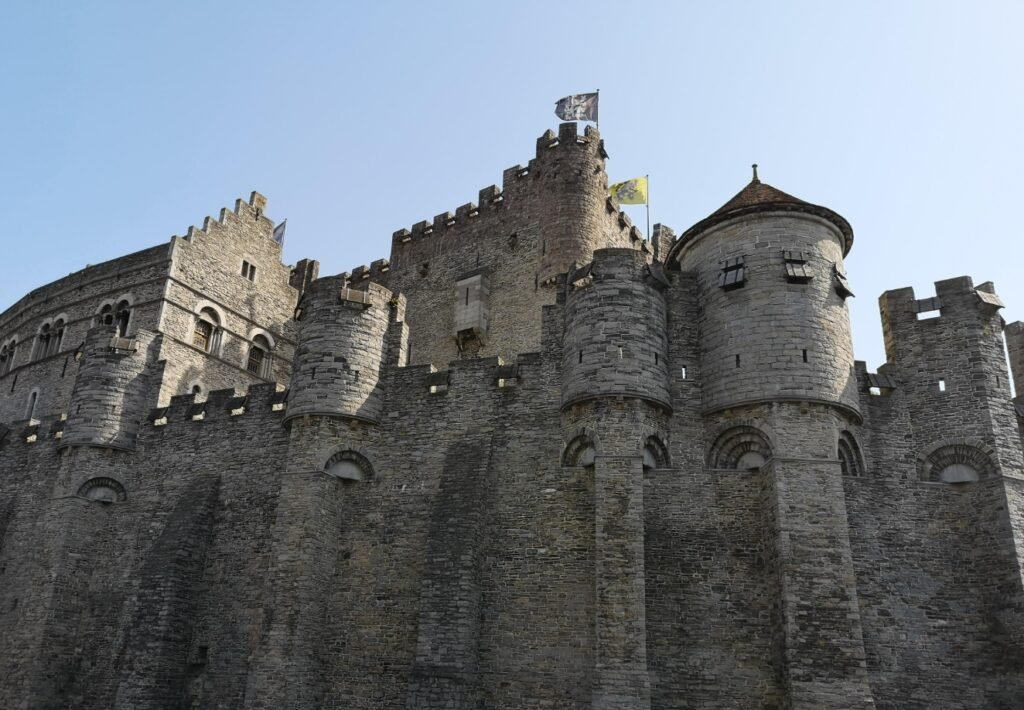Gent – A City of Stories and Legends
Setting foot in Belgium, my heart was already drawn to this enchanting land. And among all the places filled with history and legend, Ghent, an ancient yet vibrant city, captivated my imagination the most.
Ghent is a city steeped in history and culture, with countless stories and legends woven into its very name. Every brick and stone seems to whisper tales of centuries past. Only when I finally arrived did I truly feel the charm and uniqueness of this extraordinary place.
During this journey, I invite you to explore the beauty and culture of Ghent with me. We’ll stroll through its ancient streets and soak in the unique European ambiance. We’ll visit historic landmarks and uncover the stories and legends behind them. And, of course, we’ll indulge in authentic Belgian cuisine, letting our taste buds savor the magic of this land.
Ghent is more than just a city rich in history and culture—it’s also full of life and energy. Here, you can feel the locals’ love for life and their pursuit of happiness, experiencing a slice of European spirit and lifestyle firsthand.
This travelogue is my heartfelt ode to Ghent and an earnest exploration of this remarkable land. Through my words, I hope to give you a deeper understanding of this beautiful city and help you feel its charm and uniqueness.
So, let’s embark on this wonderful journey together and uncover the beauty and legends of Ghent!


Ghent is a port city with an excellent harbor and serves as a gateway to Brussels. The city has well-developed textile and steel industries. Between 1100 and 1500, Ghent was one of the most important cities in Europe, becoming a major center for wool production by the late 13th century. Today, it is a popular tourist destination rich in medieval charm. The remnants of guild halls, ancient city ruins, and majestic cathedrals draw countless visitors.
Founded in 1816, Ghent University is a hub for Flemish literature. One of the city’s most renowned treasures is the painting The Adoration of the Mystic Lamb, housed in St. Bavo’s Cathedral, widely considered a masterpiece of 15th-century Flemish art.
Ghent is also home to some of Belgium’s finest art galleries and museums, reflecting its high level of cultural and artistic sophistication.


Ghent is the second-largest city in Belgium’s Flanders region. Today, it has become an industrial hub, but it also serves as a university town, home to many Flemish intellectuals. The city hosts an institute for Dutch language and literature, further cementing its role as a center of learning.
There’s no other city in Belgium quite like Ghent, where a remarkable collection of ancient and luxurious buildings is concentrated within a flat, easily walkable urban landscape. Ghent is often compared to another famous Belgian city, Bruges. From an artistic perspective, if Bruges is known as the city of Hans Memling, then Ghent belongs to the legacy of the Van Eyck brothers.
We walked from Ghent’s central train station, a journey the map showed would take around 35 minutes. The route from the station to the city center felt very quiet and uneventful, with little to see—dull and lacking charm. My companion even joked that it felt like we were walking through an industrial district. If she had read about Ghent beforehand, she would have known that this city is home to Volvo’s largest factory outside of Sweden. Ghent is also ranked as one of Belgium’s must-visit cities, and it clearly has attractions worth discovering.
The streets, though not particularly wide, surprisingly feature two tram lines. The old trams, resembling tourist vehicles, gave us the sense that we had traveled back in time to 1919. After crossing an intersection, we came across a river, which we assumed might be a branch of the Leie River. Several single-row kayaks glided along the water, giving me the mistaken impression that this might be a rowing racecourse, similar to the canals in Haarlem. We later learned that tourists can rent kayaks here—available for one person, two, or more.
As we approached the next intersection, the outlines of the buildings across the river became clearer. The first to catch our eye was St. Michael’s Church, located next to St. Michael’s Bridge. This striking Roman Catholic church is built in the late Gothic style. Unlike other churches, it was never completed with a spire. Like many of Ghent’s medieval structures, St. Michael’s Church stands as a prime example of fine early craftsmanship.

Continuing along, we reached St. Michael’s Bridge (Sint-Michielshelling), which spans the Leie River in the heart of Ghent. This area offers some of the most beautiful scenery in Belgium. Nearby lies the Graslei, a riverside promenade beloved by locals. Along with the Korenlei on the opposite bank, this area showcases some of Belgium’s finest historical architecture.
The row of gabled buildings along the river once housed various guilds. Unlike the ornate guildhalls of Brussels’ Grand Place, these buildings are more modest but vibrant in color, each with its own distinct charm. Many of the riverside structures now house restaurants, where people sit by the water, soaking in the views and savoring life.
Like Bruges, Ghent also offers boat tours along the river. Floating quietly along the Leie allows you to fully enjoy the picturesque scenery on both banks. Or, you can do as the locals do—sit by the water, bask in the warm sunshine, and simply enjoy the moment. What more could one ask for?
Eventually, we crossed the bridge, and as soon as we reached the other side, the sight of the stunning architecture along the street left us in awe!
Gravensteen Castle (Castle of the Counts)
Gravensteen, also known as the “Castle of the Count,” is a medieval fortress located in the Belgian city of Ghent. After crossing St. Michael’s Bridge and heading past St. Michael’s Church, you’ll find this remarkable structure on the opposite bank.
The Counts of Flanders built castles in many major Belgian cities, as they held special powers and legal authority. They frequently moved between cities, never staying in one place for long. Despite constructing numerous castles, they usually lived in each one for only a few months. Gravensteen is just one of these many castles, but it stands out as the only one built during the medieval period that has survived intact to the present day.
The current Gravensteen Castle was built in 1180 by Count Philip of Alsace, inspired by the design of Crusader castles. Before its construction, a wooden castle stood on the same site, believed to date back to the 9th century.


Saint Nicholas Church and Saint Bavo Cathedral
Saint Nicholas Church, located near the bridge we crossed, was built in the 13th century. It features a distinctive Gothic architectural style, with its exterior made from blue-gray stone, giving it a unique tone unlike typical buildings.
Behind Saint Nicholas Church stands the magnificent Saint Bavo Cathedral, which was begun in the 12th century and completed in the 16th century. The cathedral is a perfect blend of Romanesque, early Gothic, and late Gothic styles and is renowned for housing several masterpieces.
One of the cathedral’s most treasured works is the triptych The Adoration of the Mystic Lamb, displayed in a side chapel to the left of the main entrance. In addition to its striking architectural design, which integrates Roman, Gothic, and Baroque influences, the cathedral also boasts an impressive collection of artworks. Among them is Peter Paul Rubens’ Saint Bavo enters the Convent at Ghent and Laurent Delvaux’s Baroque pulpit, The Preaching of Truth.


Surrounded by so many beautiful buildings, even my companion, who initially called Ghent an industrial city, changed her tune. She couldn’t stop praising how stunning and unexpectedly delightful Ghent was. In fact, we both agreed that Ghent might just be the most beautiful city we’ve seen in Belgium.



